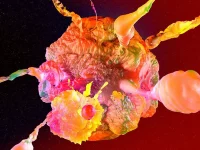‘Secret room’ decorated by Michelangelo to open to the public in Italy

He’s known for his colossal works, such as the statue of David, the floor-to-ceiling frescoes of the Sistine Chapel, and the dome of St. Peter’s which dominates the Rome skyline.
But it’s Michelangelo Buonarroti’s less bombastic work that’s on display to the public for the first time in the artist’s “secret room” in Florence.
The tiny space sits beneath the Medici Chapels in Florence, where Michelangelo sculpted intricate tombs for members of the Medici family behind the church of San Lorenzo in the Sagrestia Nuova, or New Sacristry.
In 1975, during works to create a new exit for the venue, a restorer carrying out cleaning experiments uncovered multiple drawings of human figures under two layers of plaster in a corridor underneath the sacristy which had been used to store coal.
The narrow space is 33 feet long, 10 wide and eight feet high.
The figures – sketched in charcoal and sanguine (rust-colored chalk or crayon), often one on top of the other, and of different sizes – were attributed to Michelangelo by Paolo Dal Poggetto, the former director of the Medici Chapels.
It is believed that the artist hid in the claustrophobic space for several weeks in 1530 when pope Clement VII – a member of the Medici family, who had recently returned to power in Florence, having been kicked out by a republican government for whom Michelangelo had worked – ordered his death. The death sentence was rescinded after two months, and Michelangelo returned to work in Florence, before moving to Rome four years later.
It’s believed the drawings are sketches for future works, including the legs of one of the statues in the New Sacristy.
“This place grants today’s visitors the unique experience of being able to come into direct contact not only with the creative process of the maestro, but also with the perception of the formation of his myth as a divine artist,” said Francesca de Luca, curator of the Museum of the Medici Chapels, in a statement. Paola D’Agostino, director of the Bargello Museums, which the chapels are part of, said the restoration has been “time-consuming, constant and painstaking work.”
The space has never been open regularly to the public before, but will open for visits on November 15 to highly limited numbers in order to preserve the drawings. A maximum of 100 people will be able to visit per week, in groups of four, and 15-minute visits will take place every day except Tuesdays and Sundays. The location, down a narrow staircase, means it’s not accessible to visitors with disabilities, or kids under 10.










